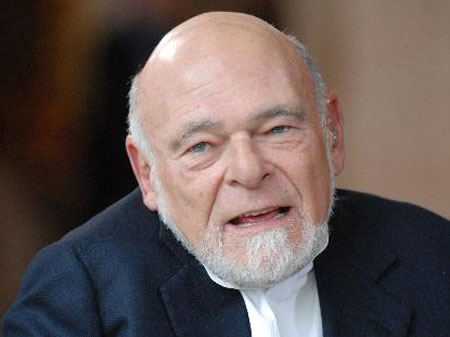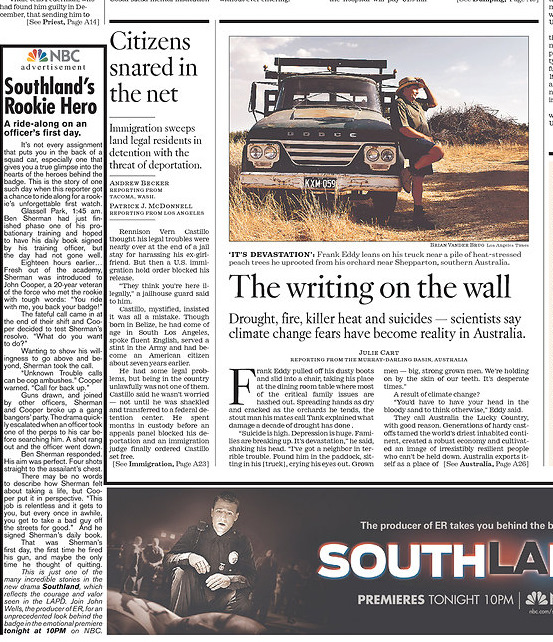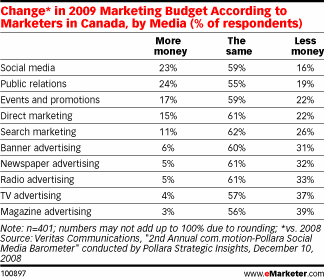New media enterprises are rising out of the ashes of their collapsed predecessors.

Sportswriter Sam Adams is one of several INDenver Times staff who introduce the new site on video
A group of 30 former Rocky Mountain News staffers has launched INDenverTimes, a professional-looking news site that aims to cover local news, sports, business, arts and entertainment, along with “a Denver perspective on national news.” The venture will take a novel approach to subscriptions when it begins charging for premium access in two weeks. Paid subscribers will get “access to the INsider Channel where you can have a direct, real time conversations with our editors and writers…from 10 am to 5 pm every weekday.” The channel will also go live if breaking news happens at other times of the day.
In its first month, the operation recorded 70,000 unique visitors and more than 311,000 page views, or about as much traffic as a top-500 blog. Funded by entrepreneurs Kevin Preblud, Brad Gray and Ben Ray “three Denver entrepreneurs” (we’re trying to get their names), the venture has a hybrid revenue model and has recruited an impressive list of writers and business-side executives. The site also looks clean and well-organized. Believe it or not, this venture is running on WordPress, the same content management system that powers this blog. They’re just doing a lot more with it.
Also, some former Seattle Post-Intelligencer staffers have launched a nonprofit online newspaper with regional coverage. Seattle PostGlobe is basically a multi-author blog that covers news, sports, lifestyles and opinion. It’s very early-stage and looks it, but we’ll keep an eye on this bootstrapped operation as it gets its sea legs.
Street Brawl in Boston
 The Boston Globe, evidently tired of all the razzing it was getting about its threatened shutdown, fires a return volley at crosstown rival Boston Herald. Weekday circulation at the Herald is off 38% in the last decade and the newsroom staff has been cut by half. Yadda yadda. What’s really interesting about this story is a comment posted by Tom Mashberg, the Herald Sunday editor who’s quoted in the piece. Mashberg reprints part of an e-mail sent to him by reporter Keith O’Brien in which O’Brien outlines plans to include Mashberg’s comments about the Globe‘s perilous situation that don’t appear in the story. He also notes that the fact that the Herald is actually profitable isn’t mentioned, either, despite a lengthy discussion about what the Herald is doing to survive. “Looks like the editors got hold of this and turned it into a hatchet job,” he says.
The Boston Globe, evidently tired of all the razzing it was getting about its threatened shutdown, fires a return volley at crosstown rival Boston Herald. Weekday circulation at the Herald is off 38% in the last decade and the newsroom staff has been cut by half. Yadda yadda. What’s really interesting about this story is a comment posted by Tom Mashberg, the Herald Sunday editor who’s quoted in the piece. Mashberg reprints part of an e-mail sent to him by reporter Keith O’Brien in which O’Brien outlines plans to include Mashberg’s comments about the Globe‘s perilous situation that don’t appear in the story. He also notes that the fact that the Herald is actually profitable isn’t mentioned, either, despite a lengthy discussion about what the Herald is doing to survive. “Looks like the editors got hold of this and turned it into a hatchet job,” he says.
Jules Crittendon, a Herald editor, minces no words telling what he thinks of the Globe story and the Globe in general. “One Herald reporter is worth something like 5 to 10 Globies, for all their inflated sense of self-worth,” he writes. And he’s just getting started. Crittendon rips the Globe for a self-important attitude, lazy reporters, layers of redundant management, endless story lengths and on an on. If you hate the Globe to begin with, his blog entry will warm your heart.
The Globe‘s negotiations with its unions continue to be rancorous. The Newspaper Guild now says it will negotiate concessions related directly to cost cuts, but won’t talk about issues like the elimination of lifetime job guarantees for about 190 veterans and the end of seniority rules in layoffs. The Guild is also calling for negotiations to be performed in public and says it wants to deal directly with any potential acquirer on the cost-cut issue. The union’s defiance is a marked contrast to the relatively quick work the San Francisco Chronicle‘s unions made of Hearst’s demands to cut costs. By the way, Globe managers are feeling some of the pain, too. Bonuses have been eliminated for this year, affecting more than 200 people, including the publisher.
Government Bailout for News Infrstructure
Mark Cooper suggests a hybrid approach to saving quality journalism: a “media stimulus package” that could give new localized news services a platform upon which to build profitable businesses. ” Just as IT health and education funds seek to build a new infrastructure for public service in their areas, IT media funding can build infrastructure in the journalism space,” writes Cooper, who is a fellow at the Donald McGannon Communication Research Center at Fordham University.
Summarizing his argument on Huffington Post (a fuller discussion is here) Cooper notes that major metro dailies are being hit hardest by changes in reader and advertiser behavior because they need to be all things to all people. Although most major metros have discarded much of their national and international coverage, they’re still forced to do too much with too few resources. Shoring up these doomed businesses isn’t the answer, Cooper says. Instead, we should look to the existing media models “that are closest to the emerging citizen-media, like public governmental and educational cable channels on the TV side and low-power FM on the radio side.” These media have long been under-funded, but they have the best chance of molding their models to the new participatory journalism. As long as the US is pouring $1.6 trillion into broken banks, how about a few billion to lay the foundation for a new media infrastructure?
Uh-Oh. It’s Earnings Time
Gannett kicked off the earnings parade, which looks to be more of a funeral procession this year, announcing a60% drop in profit on an 18% slide in revenue. Bad as the numbers were, Gannett’s operating profits actually beat analysts’ expectations by a penny. They also weren’t as bad as the 30% declines expected by some analystsquoted in The New York Times last week. Those analysts mostly agree that this is a 100-year flood for the industry with the combination of recessionary pressures, catastrophic business problems in some key advertising segments and rising paper and fuel costs sending many publishers into the red. They also agree that more papers are likely to close this year. The revenue plunge isn’t hurting small newspapers and broadcast outlets quite as hard, but even they are expecting double-digit declines.
And it isn’t just newspapers. “Magazines collectively recorded a 25.9 percent plunge in ad pages in the first quarter, with revenue falling 20.2 percent,” says Seeking Alpha’s Jeff Bercovici. ZenithOptimedia is projecting the worst declines in ad spending since it started keeping statistics in 1980: overall US spending down 8.7% with newspapers down 12% and magazines down 11%.
Miscellany
In a sign of the times, the world’s largest maker of newsprint has filed for bankruptcy protection. Abitibi-Bowater, which was formed from a 2007 merger, is struggling to pay $8.78 billion in debt. Even though the Canadian company controls 45% of the North American-based newsprint market, a steep drop in demand has slammed its business. The company has already cut paper production 25% this year. Its 25 pulp and paper mills and 30 wood products plants will continue to operate for now, but some are likely to close as part of the restructuring.
Employment levels in American newsrooms are now lower than they’ve been in more than 25 years, the American Society of Newspaper Editors reports. The industry shed a record 5,900 jobs last year, more than double the previous record of 2,400 eliminated in 2007. Erica Smith pegs the number much higher at nearly 16,000 reported layoffs in 2008. Employment levels are now comparable to those from the early 1980s. The good news (we guess): there was a 21% rise in online-only journalists last year, to 2,300. Incidentally, the American newsroom remains mostly white: Minorities make up 13.4% of the workforce and 450 newspapers employ no minorities at all.
More people still rely on newspapers for their news than on the Internet, according to a Harris Interactive survey commissioned by Parade Publications and published by the Newspaper Project. The study of 1,004 US adults also found that 90% of Americans rely on printed or online newspapers for their news and that newspapers are the only medium used more for local than for national news. The research confirms what most people already know: newspapers are important news sources. It doesn’t cast any light on the real problem, though, which is how to create a business model for them that works.
 Sam Zell now admits that his highly leveraged 2007 purchase of Tribune Co. was a mistake. For some reason, several news outlets thought this was newsworthy. Zell is always good for a quote, though: Commenting on the prospect of finding a merger partner for his bankrupt company, Zell said, “That’s like asking someone in another business if they want to get vaccinated with a live virus.”
Sam Zell now admits that his highly leveraged 2007 purchase of Tribune Co. was a mistake. For some reason, several news outlets thought this was newsworthy. Zell is always good for a quote, though: Commenting on the prospect of finding a merger partner for his bankrupt company, Zell said, “That’s like asking someone in another business if they want to get vaccinated with a live virus.”
The Orlando Sentinel laid off 50 people last week and didn’t announce it, according to an anonymous comment on this Chicago Tribune story. The person is right that there was no announcement, but we couldn’t confirm the layoffs.
The New York Times is cutting and consolidating some sections in order to save money. Gone are Escapes, a travel guide published on Fridays, as well as Sunday sections that only go to readers in the New York metropolitan area. They’ll be combined into a new Sunday section featuring regional information. Fashion coverage is axed from the weekly magazine and the guide to each day’s newspaper will be consolidated into a single page.
And Finally…
A reader in upstate New York reports on this example of an over-eager, and ultimately failed, Albany Times Union promotion:
I only wanted Sunday’s paper but then they started delivering Thursday and Saturday for free.
When I tried to stop the free Thursday and Saturday papers, they offered me the whole rest of the week for free. I said no, I only wanted Sunday. They said okay and for a while I only got Sunday deliveries, but then I started getting Thursday and Saturday again. I figured it had something to do with local ads on those days but it still annoyed me.
I was so frustrated that I decided to stop delivery altogether. That’s when I was told “You don’t want to put your paper carrier out of a job do you?” And then they offered me a totally free subscription seven days a week for three months. I didn’t accept it. I just wanted them to stop delivering free papers that I didn’t have time to read and was just throwing out.
So the irony of the whole thing is that because they kept sending me free papers, they lost me as a customer.”
 The New York Times Co.
The New York Times Co. 



 The Boston Globe, evidently tired of all the razzing it was getting about its threatened shutdown,
The Boston Globe, evidently tired of all the razzing it was getting about its threatened shutdown,  Sam Zell now admits that his highly leveraged 2007 purchase of Tribune Co.
Sam Zell now admits that his highly leveraged 2007 purchase of Tribune Co. 

 Eric Alterman (right)
Eric Alterman (right) 


